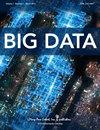基于机器学习的手语识别系统的开发
IF 2.6
4区 计算机科学
Q2 COMPUTER SCIENCE, INTERDISCIPLINARY APPLICATIONS
引用次数: 0
摘要
耳聋和声音障碍是历史上一直存在的残疾,阻碍了个人进行语言交流,并导致他们与以语言交流为主的社会隔离。手语已经成为这些残疾人的主要交流方式。然而,它呈现出语言障碍,因为那些能听到的人通常听不懂。为了解决这个问题,人们提出了各种识别手语的方法。本文旨在开发一种基于机器学习的实时手语识别系统。该论文涉及到一个由44,654张代表静态美国手语(ASL)字母符号的图像组成的数据集的获取。HandDetector模块用于通过PC网络摄像头检测和捕获签名者的手形成每个手势的图像。数据集分为三组:训练数据(20,772例)、验证数据(8,903例)和测试数据(14,979例)。对图像进行预处理,训练并编译卷积神经网络(CNN)模型。本文使用的CNN由三个卷积层和一个SoftMax输出层组成,使用Adam优化器和分类交叉熵损失函数进行编译。使用测试数据集对系统的性能进行了评估。值得注意的是,该系统取得了显著的准确率,训练准确率为99.86%,验证准确率为99.94%,测试准确率为94.68%。这项研究的结果表明,在手语识别方面取得了重大进展,超过了以往的文献研究结果。本文章由计算机程序翻译,如有差异,请以英文原文为准。
Development of a Sign Language Recognition System Using Machine Learning
Deafness and voice impairment have been persistent disabilities throughout history, hindering individuals from engaging in verbal communication and leading to their isolation from the predominantly vocally communicating society. Sign language has emerged as the primary mode of communication for people with these disabilities. However, it presents a language barrier as it is not commonly understood by those who can hear. To address this issue, various methods for recognizing sign language have been proposed. This paperaims to develop a machine learning-based system that can recognize sign language in real-time. The paper involved the acquisition of a dataset consisting of 44,654 images representing the static American Sign Language (ASL) alphabet signs. The HandDetector module was utilized to detect and capture images of the signer's hand forming each sign through a PC webcam. The dataset was split into three sets: training data (20,772 cases), validation data (8,903 cases), and test data (14,979 cases). Image pre-processing techniques were implemented on the images and a convolutional neural network (CNN) model was trained and compiled. The CNN utilized in the paper comprised of three convolutional layers and a SoftMax output layer and it was compiled using the Adam optimizer and categorical cross-entropy loss function. The performance of the system was evaluated using the test dataset. Notably, the system achieved remarkable accuracy rates, having a training accuracy of 99.86%, a validation accuracy of 99.94%, and a test accuracy of 94.68%. The results obtained from this study demonstrated significant advancements in sign language recognition, surpassing previous findings in the literature.
求助全文
通过发布文献求助,成功后即可免费获取论文全文。
去求助
来源期刊

Big Data
COMPUTER SCIENCE, INTERDISCIPLINARY APPLICATIONS-COMPUTER SCIENCE, THEORY & METHODS
CiteScore
9.10
自引率
2.20%
发文量
60
期刊介绍:
Big Data is the leading peer-reviewed journal covering the challenges and opportunities in collecting, analyzing, and disseminating vast amounts of data. The Journal addresses questions surrounding this powerful and growing field of data science and facilitates the efforts of researchers, business managers, analysts, developers, data scientists, physicists, statisticians, infrastructure developers, academics, and policymakers to improve operations, profitability, and communications within their businesses and institutions.
Spanning a broad array of disciplines focusing on novel big data technologies, policies, and innovations, the Journal brings together the community to address current challenges and enforce effective efforts to organize, store, disseminate, protect, manipulate, and, most importantly, find the most effective strategies to make this incredible amount of information work to benefit society, industry, academia, and government.
Big Data coverage includes:
Big data industry standards,
New technologies being developed specifically for big data,
Data acquisition, cleaning, distribution, and best practices,
Data protection, privacy, and policy,
Business interests from research to product,
The changing role of business intelligence,
Visualization and design principles of big data infrastructures,
Physical interfaces and robotics,
Social networking advantages for Facebook, Twitter, Amazon, Google, etc,
Opportunities around big data and how companies can harness it to their advantage.
 求助内容:
求助内容: 应助结果提醒方式:
应助结果提醒方式:


